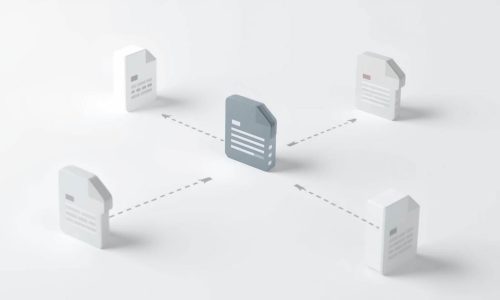Canonical Tag in SEO: Why It Is Crucial for Your SEO Strategy in 2025

In 2025, mastering a canonical tag in SEO is more important than ever. Duplicate content can quietly harm your rankings, confuse search engines, and dilute your website’s authority. That’s where canonical tags come in. They clearly signal which page should be prioritized, keeping your SEO strategy clean and effective.
Table of Contents
ToggleBut understanding canonical tags isn’t just about avoiding duplicates. They also improve crawl efficiency, help consolidate ranking signals, and ensure users consistently land on the correct page.
If you want to dive deeper into improving your site’s technical structure, check out this guide on technical SEO for actionable strategies.
By implementing canonical tags correctly, you can protect your rankings, streamline indexing, and give your content the visibility it deserves.
What is A Canonical Tag?
A canonical tag is a small piece of HTML code that tells search engines which page is the “main” version.
It’s like giving Google clear directions: “This is the page I want you to focus on.”
By adding a canonical tag, you point search engines to the page you want recognized as the original. This helps consolidate ranking signals, avoids duplicate content issues, and makes your SEO strategy more effective.
Why Does Canonicalization Matter For SEO?
Without a canonical tag, search engines can get confused about which page should rank. This hurts your visibility.
When you use canonicalization correctly, you consolidate ranking signals. That means backlinks, engagement, and authority are all credited to the right page. Instead of competing with yourself, you strengthen the single version you want to rank.
It also improves crawl efficiency. Search engines don’t want to waste time indexing endless duplicates. By pointing them to the preferred page, you make crawling and indexing more efficient. That’s especially important if your site has hundreds of product pages, URL parameters, or content variations.
Another reason canonicalization matters is user experience. Imagine a shopper landing on slightly different versions of the same product page. It feels messy. Canonical tags help ensure people see the right page consistently, which builds trust and keeps them engaged.
When To Use A Canonical Tag?
Duplicate content on multiple URLs
Sometimes, the exact same content appears on more than one URL. This can confuse search engines and weaken rankings.
By using a canonical tag in SEO, you point Google to the version that truly matters. This way, you consolidate ranking signals and avoid competing against your own pages.
WWW vs. Non-WWW or HTTP vs. HTTPS versions
Your website can exist in different versions: with or without “www,” or on HTTP and HTTPS. Without guidance, search engines may treat these as separate sites.
A canonical tag tells them which version is the authoritative one. You maintain stronger SEO value and avoid duplicate content issues across multiple versions of your site.
Pages with URL parameters (like UTMs)
Tracking parameters such as UTM tags are great for campaigns but messy for SEO. They create multiple URLs with identical content.
Instead of letting these versions fight for attention, use a canonical tag. You keep your tracking data while showing search engines which URL is the primary one.
E-commerce product variations (Color, Size, etc.)
Online stores often have many variations of the same product. A blue shirt and a red shirt may each have unique URLs. But search engines see very similar content across these pages.
By adding a canonical tag, you make it clear which product page should hold the SEO authority. This helps you avoid keyword cannibalization and ranking dilution.
Paginated content (Page 1, Page 2, etc.)
If you run a blog or e-commerce site, you probably use pagination. For example, category pages often spread across multiple URLs. While pagination is useful for users, it can dilute SEO signals.
Adding a canonical tag points search engines to the main page, preserving authority. This keeps your core category or blog page stronger in rankings.
Canonical Tags Best Practices
Choose one main page and point to it
Think of your main page as the “leader” of all similar content. You want search engines to know which version deserves credit. Point all duplicates to this primary page using a canonical tag in SEO. This consolidates ranking signals and avoids confusing Google about which page to show.
Extra tip: Pick the version with the most traffic or backlinks as your main page (it usually has the strongest authority.)
Use full URLs instead of short ones
Always include the complete URL in your canonical tag, like https://www.example.com/page. Avoid shortcuts like /page or relative paths. Full URLs remove ambiguity, ensuring search engines correctly recognize the preferred page. This small detail can prevent indexing mistakes.
Extra tip: Double-check your site uses https:// or http:// consistently, matching your main page exactly.
Don’t create loops or point to the wrong page
A canonical tag pointing to itself or a wrong page can backfire. Loops confuse search engines and dilute your SEO efforts. Double-check each tag to ensure it correctly references the main page. Accuracy here keeps your content strong in search results.
Extra tip: Use a tool like Screaming Frog or Ahrefs to scan for broken or looping canonicals across your site.
Use redirects together with canonicals when needed
Sometimes, combining a 301 redirect with a canonical tag is smart, especially for old or moved pages. Redirects handle users, while canonicals handle search engines. Together, they reinforce the correct page and prevent duplicate content issues from hurting your rankings.
Extra tip: Redirect only outdated pages to the new main page, and add a canonical pointing there too.
Keep canonical tags the same on all duplicate pages
Consistency matters. Every duplicate or near-duplicate page should point to the same canonical URL. This unified approach tells search engines exactly which page to prioritize, strengthening your SEO strategy and keeping your site’s authority clear.
Extra tip: If your site has hundreds of duplicates, consider automating canonical tags via templates or CMS settings.
When Not To Use A Canonical Tag
The page has unique content
Even if two pages look similar, don’t use a canonical tag in SEO if their content differs. Each page tells a different story, targets different keywords, or provides unique value to your audience.
Using a canonical incorrectly could prevent search engines from indexing these pages, limiting your visibility. Always ask yourself: does this page deserve its own spot in search results? If yes, skip the canonical tag.
You intend for multiple pages to rank
Sometimes, you want more than one page to rank for related topics. A canonical tag in SEO could unintentionally funnel all authority to one page, stopping the others from performing.
Instead, optimize each page individually with strong titles, meta descriptions, and content focus. This way, you give each page a fair chance to earn traffic without interfering with search engines’ understanding.
A 301-Redirect is more appropriate
If two pages truly belong together, a 301-redirect often works better than a canonical tag in SEO. Redirects transfer full ranking signals and provide a seamless user experience.
For example, if you merged two blog posts or updated a product page URL, a redirect ensures visitors land in the right place. Canonical tags only suggest the preferred URL (they don’t enforce it), so sometimes a redirect is simply smarter.
Canonical Tags VS 301-Redirects
When it comes to managing duplicate content, canonical tags and 301-redirects are often confused. But they serve very different purposes, and knowing the difference can save your SEO strategy.
A canonical tag in SEO is, as already discussed, like telling search engines: “This is the main page I want you to focus on.”
On the other hand, a 301-redirect is a firm instruction. It automatically sends visitors and search engines from one URL to another. This transfers almost all ranking signals and ensures users land on the correct page. Unlike a canonical tag, a redirect actively changes where traffic goes.
Here’s a simple way to decide: use a canonical tag when the content is nearly identical but you still want each page accessible. Use a 301-redirect when one page replaces another entirely, or when you want to avoid duplicate content completely.


